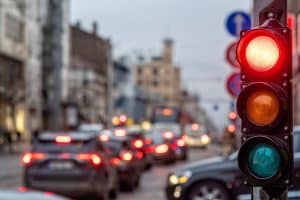It’s Time for Charlotte to Tackle Red Light Runners
 Running a red light is dangerous and illegal. It puts everyone around the light at risk, and collisions can be catastrophic, especially when there’s a commercial vehicle involved.
Running a red light is dangerous and illegal. It puts everyone around the light at risk, and collisions can be catastrophic, especially when there’s a commercial vehicle involved.
In recent years, there has been a concerning increase in the number of drivers running red lights in Charlotte. While this trend may be attributed to a variety of factors, such as distracted driving and the influence of social media, the consequences are undeniable: a surge in red-light violations, which, in turn, raises the risk of accidents and road safety hazards.
Axios cited data from various agencies, including the Charlotte-Mecklenburg Police Department and the North Carolina State Highway Patrol, which points to a notable rise in violations. For example, in Charlotte, citations for running red lights have steadily increased since 2005, with the city’s growing population and focused enforcement efforts being contributing factors. Similarly, statewide numbers have seen a substantial jump, further underscoring the extent of this issue.
However, the sheer volume of red-light runners doesn’t necessarily equate to a direct correlation with accidents. Surprisingly, crash statistics, particularly those where one driver disregards a traffic signal, have remained relatively consistent over the past few years. In Charlotte, the numbers of such accidents, as reported by the North Carolina Department of Transportation, have shown some fluctuations but no significant upward trend. This situation raises questions about the root causes of the problem and the efficacy of red-light enforcement measures. Furthermore, the shortage of law enforcement officers to monitor intersections and the focus on other pressing issues have shifted the priorities of local authorities away from addressing red-light running.
What is the “dilemma zone?”
The “dilemma zone [is] that time when a traffic light turns yellow as you are either approaching or going through an intersection,” and you have to make a decision: do you speed up or slow down? Factors that commonly come into play in dilemma zones include:
- Distance and time. The decision to stop or keep going depends on the driver’s speed, the distance to the intersection, and the amount of time left on the yellow signal.
- Too fast to stop. If a driver is traveling at a speed that makes it impossible to stop safely before reaching the intersection, they may choose to proceed through the intersection, even though the light is turning yellow.
- Too slow to clear the intersection. On the other hand, if a driver is too close to the intersection when the light turns yellow, they might not have enough time to clear the intersection before it turns red. In this case, they might abruptly stop, risking a rear-end collision.
The dilemma zone is where the risk of red-light running is the highest. When drivers make split-second decisions in this zone, it can lead to dangerous situations, especially when the light turns red before they can safely clear the intersection. Several factors influence the size and location of the dilemma zone, including the driver’s speed, road conditions, driver behavior, and the duration of the yellow signal.
Back in 2018, the dilemma zone was in the spotlight when more school buses were being caught running red lights. As a school bus is a large and heavy vehicle, it takes longer to stop, and so could not appropriately always stop in time for a red light.
What’s the solution to ending red-light running in Charlotte?
Addressing the issue of red-light runners in Charlotte requires a multifaceted approach that combines enforcement, education, and infrastructure improvements. One potential solution is to reintroduce red-light cameras, which automatically capture violations and issue citations. Increasing police presence at problem intersections can also be a simple yet effective deterrent. Additionally, public awareness campaigns can educate drivers about the dangers of running red lights, emphasizing the potential consequences of such actions.
Improving street design, pedestrian infrastructure, and traffic signal timing can reduce the likelihood of drivers running red lights. Collaborative efforts involving law enforcement and local communities can also play a significant role. Reviewing and strengthening traffic laws and penalties, using technology-based solutions, analyzing data, and prioritizing resources for high-risk intersections can collectively contribute to safer roadways. A combination of these strategies, tailored to Charlotte’s specific needs, is likely the way to go to cut down red-light running and enhance road safety in the city.
We at Price, Petho, & Associates would love to see a decrease in red-light runners. We have had many clients who were the victims of those who ran red lights, and their injuries were nothing to take lightly. If you have been involved in a red light accident, please call our office or complete our contact form today to schedule a free consultation. We have offices in Charlotte, Rockingham, and Rutherfordton for your convenience.

Attorney Doug Petho is the owner and founder of Price, Petho & Associates. His primary focus is the litigation of plaintiff’s personal injury suits, and he has successfully tried hundreds of cases to jury verdict involving car accidents, trucking accidents, pedestrian accidents, slip and fall accidents, and work-related accidents. Contact his office in Charlotte today.
